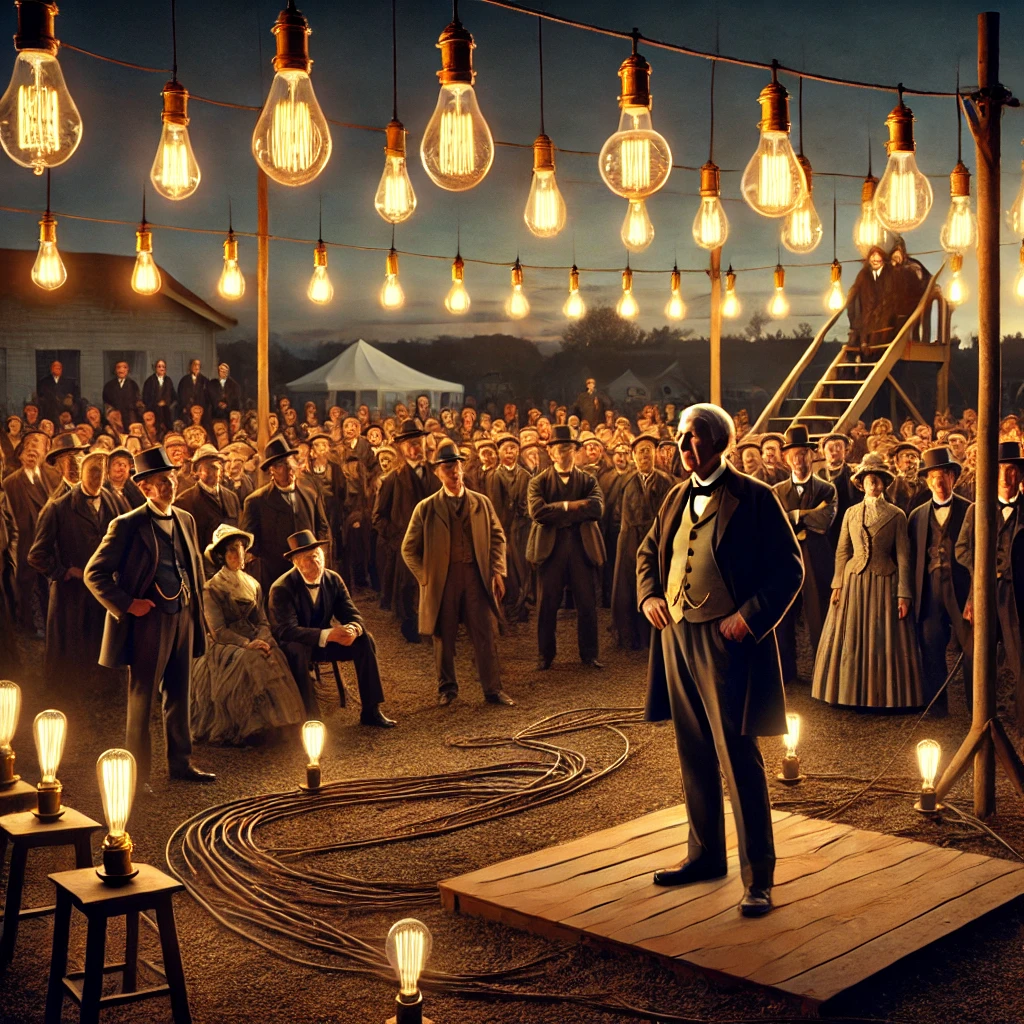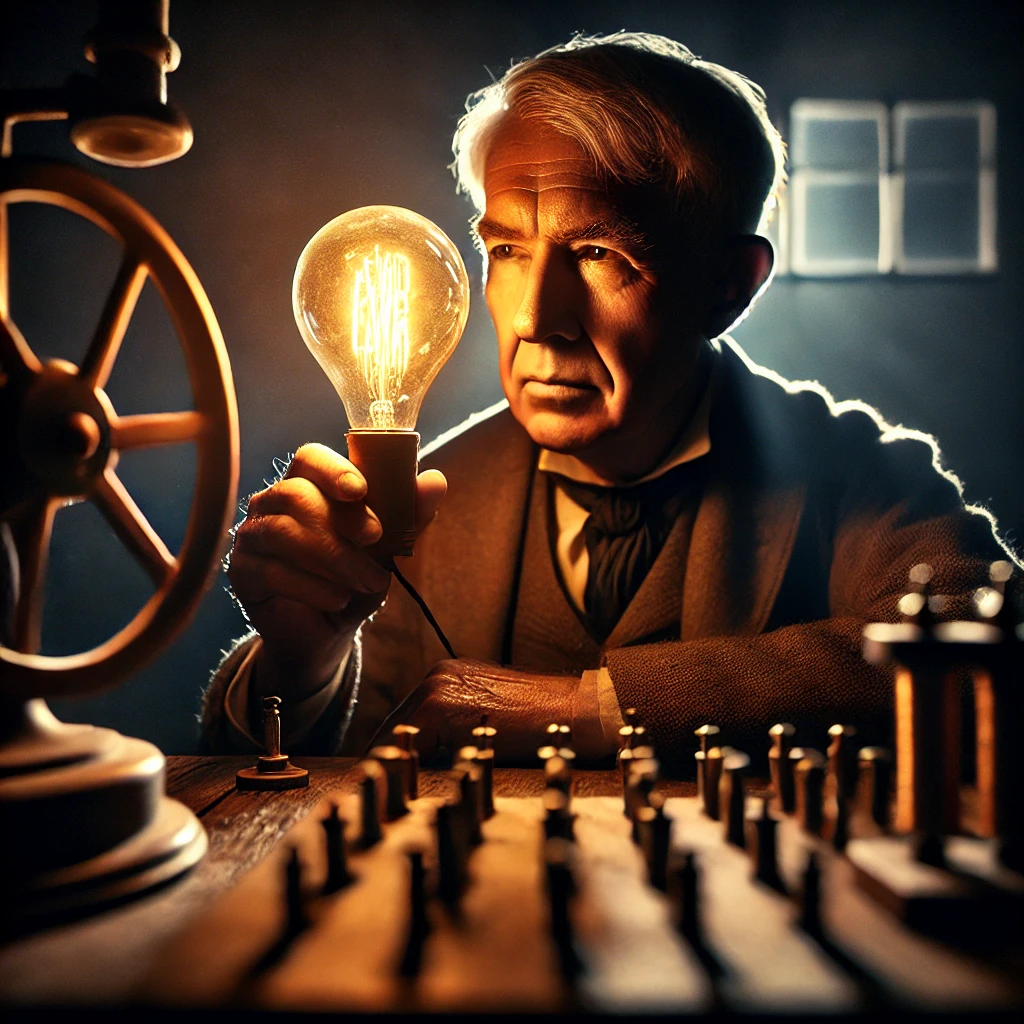On December 31st, 1879, Thomas Edison gave the first public demonstration of his electric light bulb, marking a pivotal moment in technological history. Edison’s invention of the light bulb revolutionized how people lived, worked, and interacted with the world. It was more than just a practical innovation—it symbolized the dawn of a new era in electricity, paving the way for the modern world we live in today.

The Challenge of Electric Lighting
Before Edison’s breakthrough, lighting was primarily provided by candles, oil lamps, and gas lamps. These methods were not only inefficient but also dangerous, particularly gas lighting, which could cause deadly fires or explosions. The search for a safer and more reliable form of illumination was a critical challenge for scientists and inventors of the time.
Edison’s work on the light bulb stemmed from his earlier efforts to improve telegraphy and telephony. He understood the potential of electricity and was determined to find a way to make it accessible to the public. Many inventors had attempted to create a practical electric light, but none succeeded in creating a cost-effective, long-lasting bulb. Edison’s genius lay not only in creating the filament that could burn for hours but also in developing a vacuum inside the bulb to prevent the filament from burning up too quickly.
The First Public Demonstration
Edison’s first public demonstration of the electric light bulb took place at Menlo Park, New Jersey, where he had established his laboratory. On that December evening in 1879, he illuminated the room with his newly designed bulb, impressing onlookers with its brilliance. Unlike other bulbs that had been attempted before, Edison’s bulb burned brightly for hours, creating a safe and reliable source of light. This demonstration marked the beginning of a transformation in how people would illuminate their homes, businesses, and streets.

The impact of this public demonstration was immense. It proved that electric lighting could be practical and reliable, offering a clear alternative to gas and oil. Edison’s bulb soon caught the attention of investors, and within a few years, he was able to establish the infrastructure needed to bring electricity into homes and businesses across the United States. This breakthrough set the stage for a series of innovations that would change the world, from power generation to the electrical grid.
A Lasting Legacy
The invention of the electric light bulb is one of the defining moments of the modern era. Edison’s work revolutionized industry and daily life, making electric lighting widely available to the public and triggering an era of mass electrification. Over the following decades, the widespread adoption of electric lighting transformed urban life, extending the day well into the night and enabling longer working hours and safer environments.
Beyond the light bulb, Edison’s work on electricity laid the foundation for the development of modern electrical systems. His creation of the first power station in New York City, which provided electricity to homes and businesses, marked the beginning of the global shift toward electrical energy. Today, we take for granted the electrical systems that power homes, businesses, and entire cities, all made possible by Edison’s groundbreaking work.

On December 31st, 1879, Thomas Edison’s demonstration of the electric light bulb marked the beginning of a new era. His innovation not only illuminated the world in a literal sense but also helped usher in the modern age of electricity. The widespread use of electric lighting revolutionized daily life, transforming everything from the workplace to the home. Edison’s invention remains one of the most important technological achievements of all time, and its impact continues to shape our lives today.
